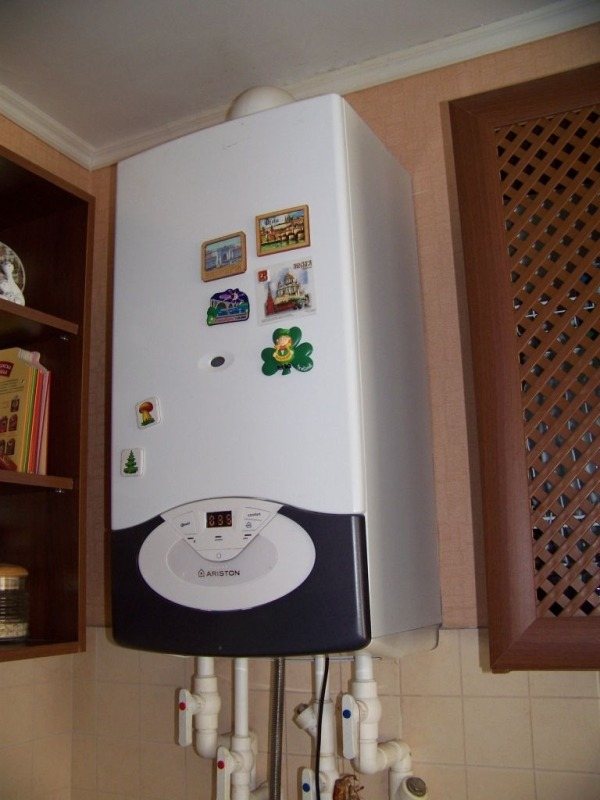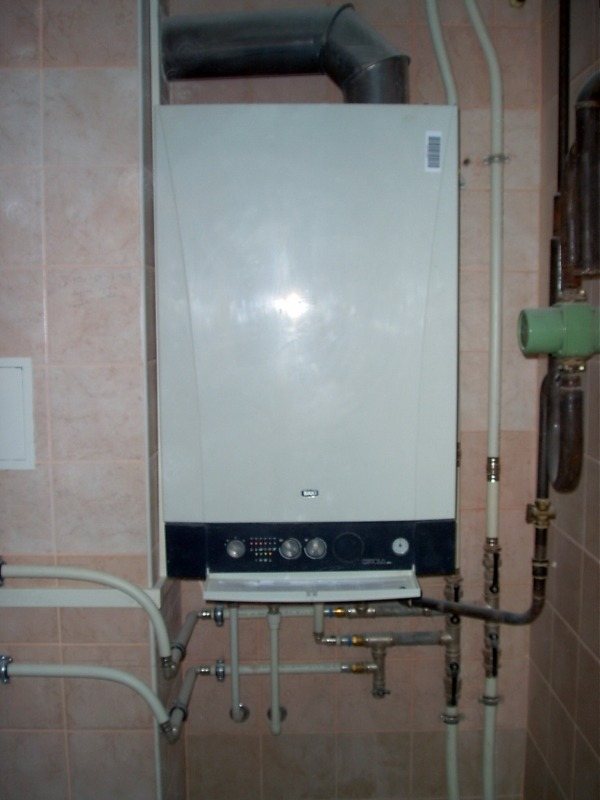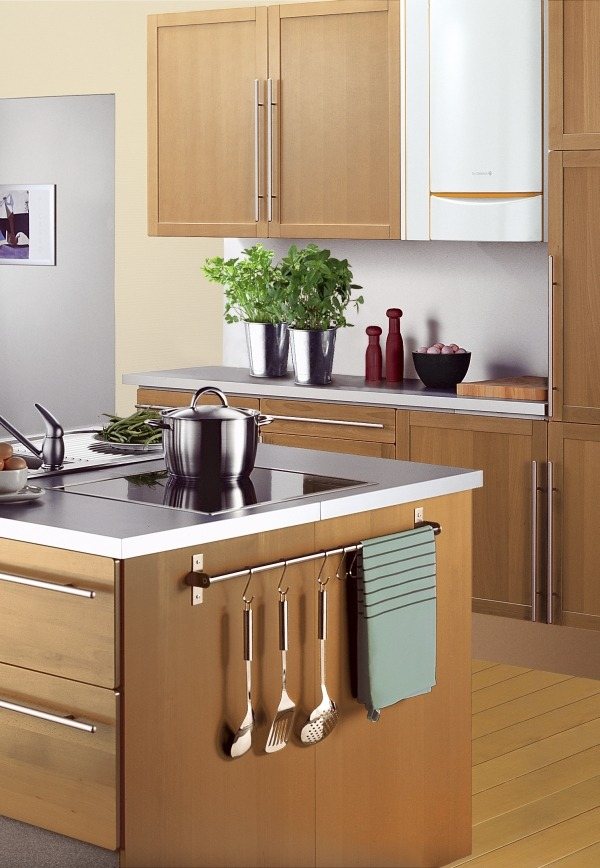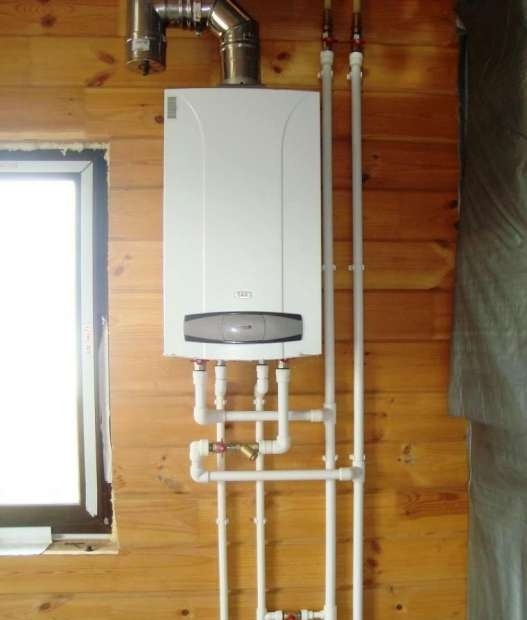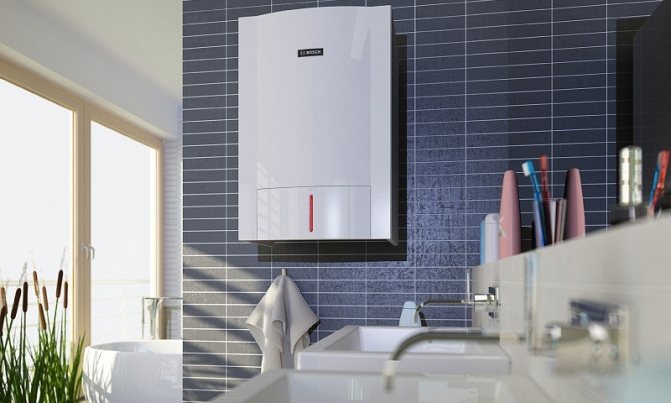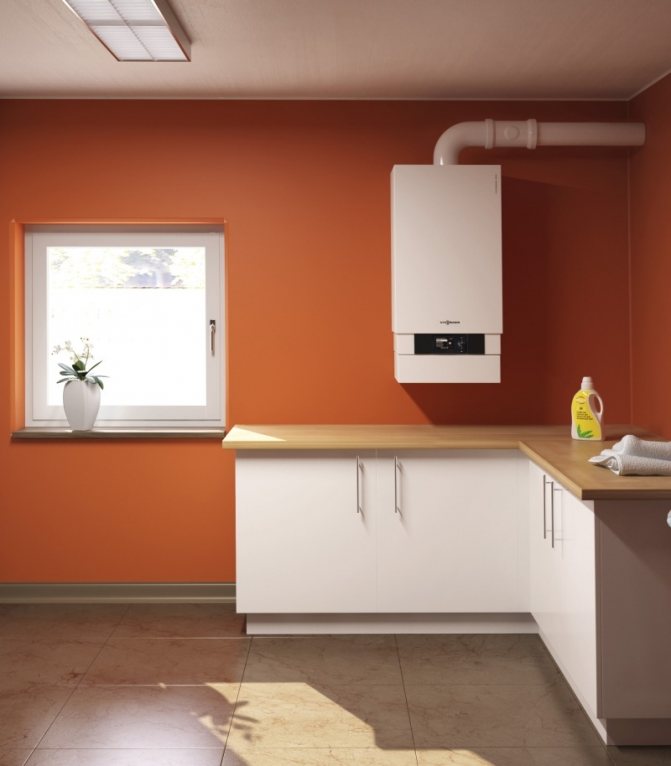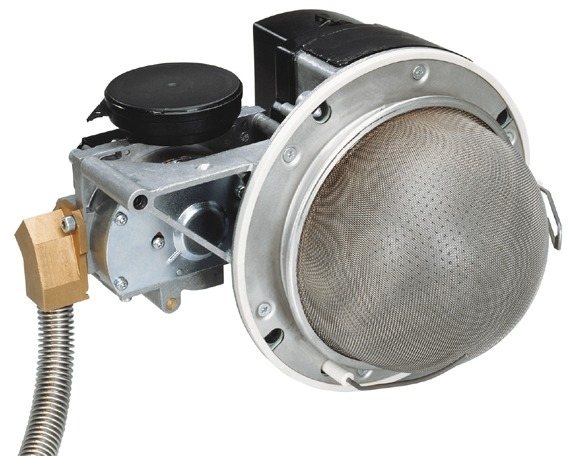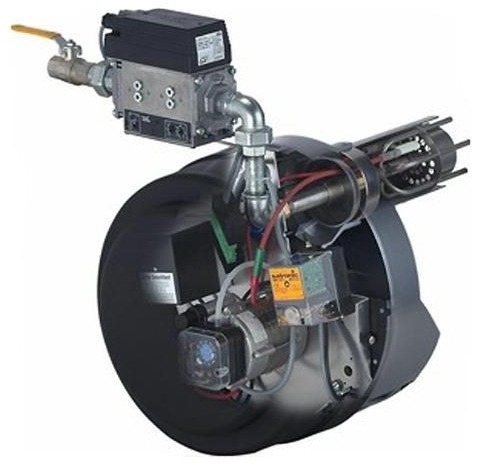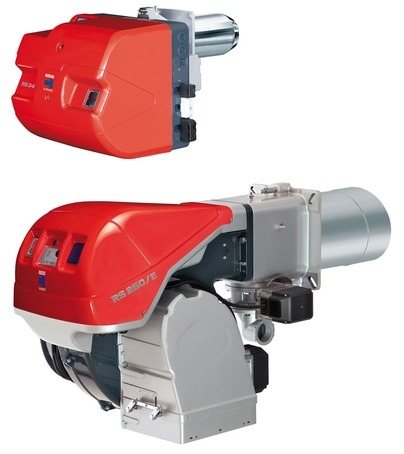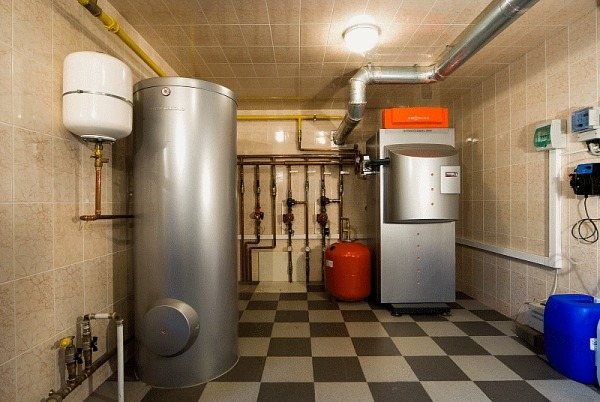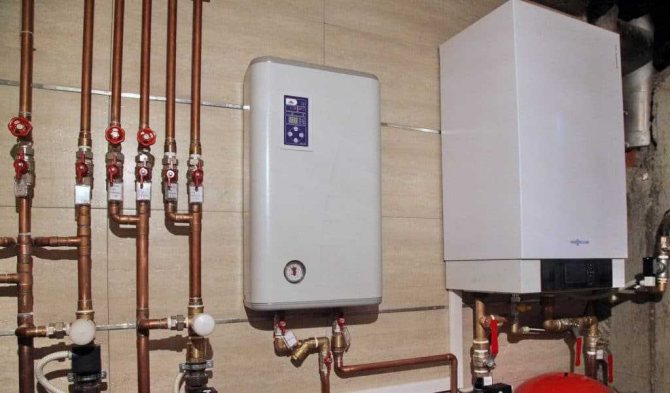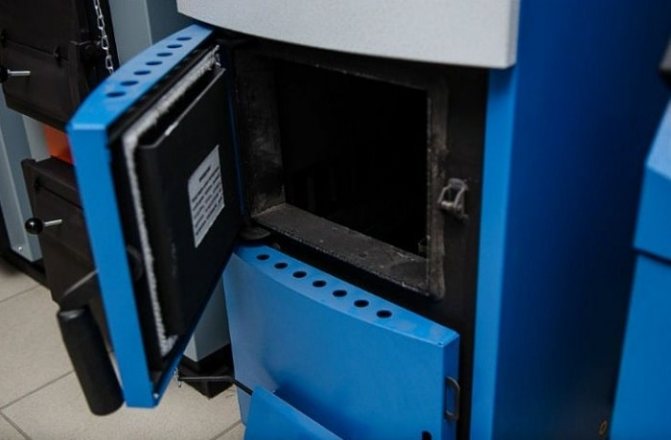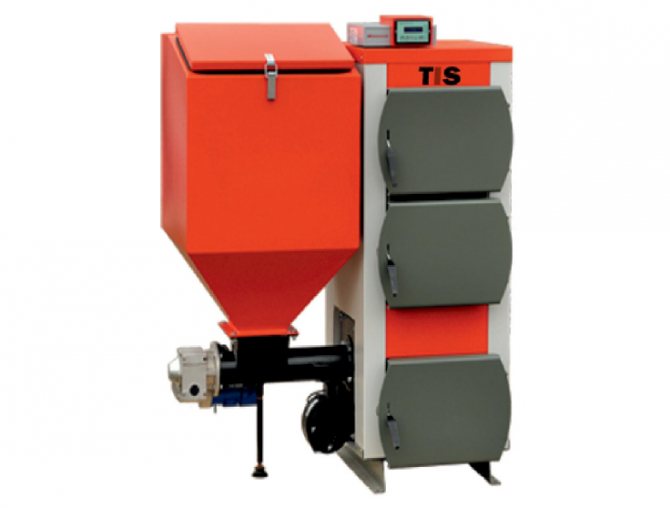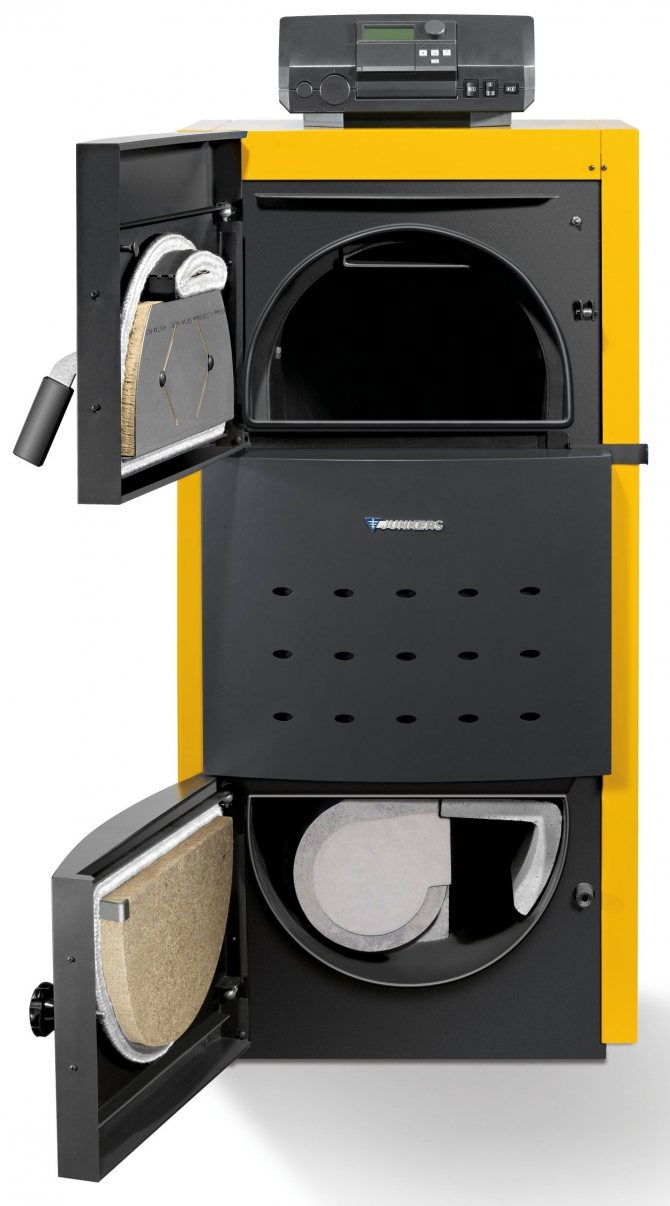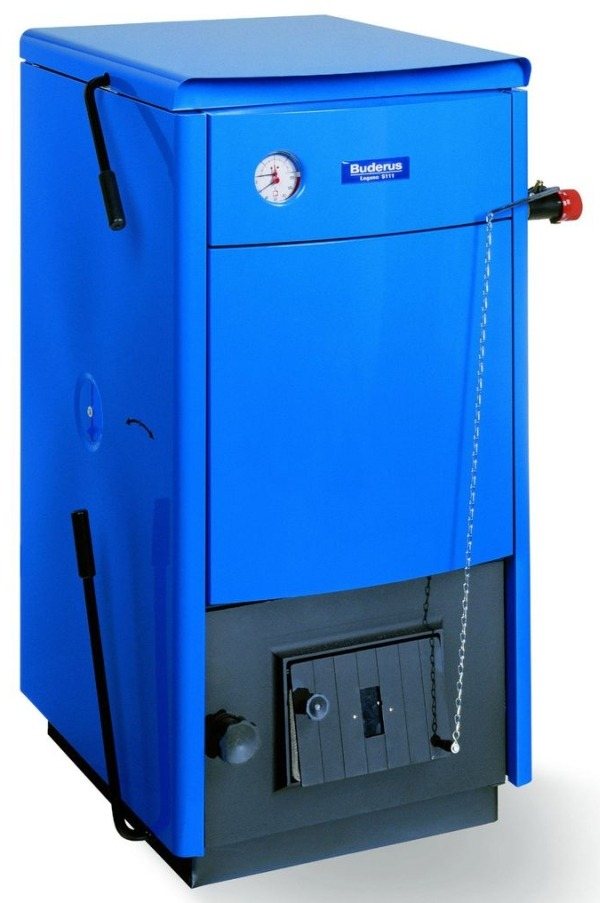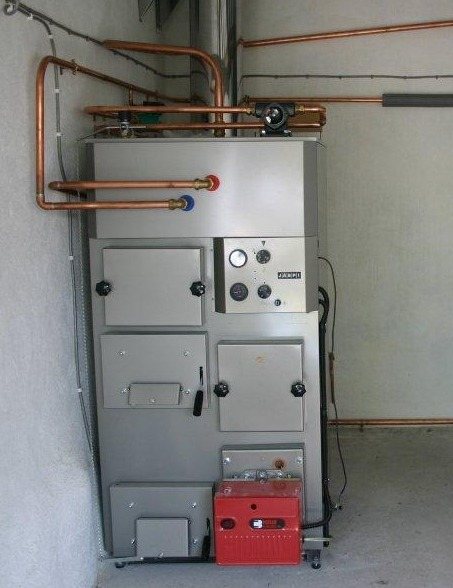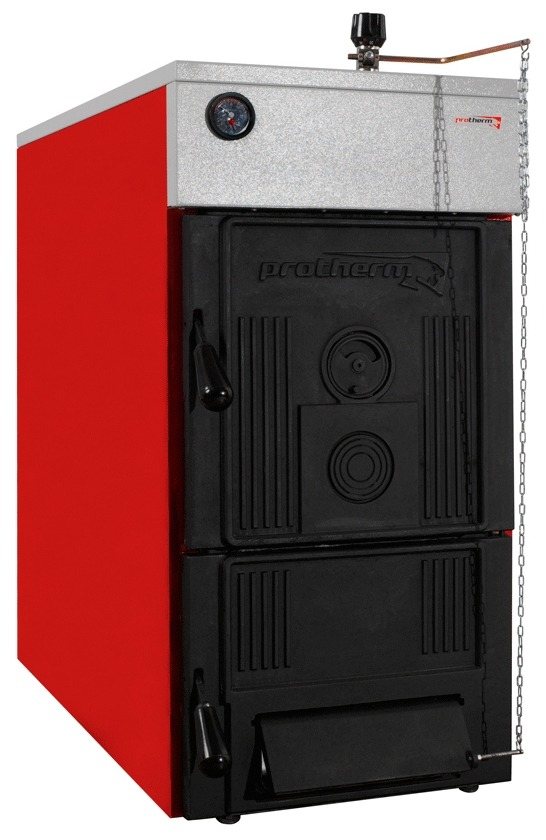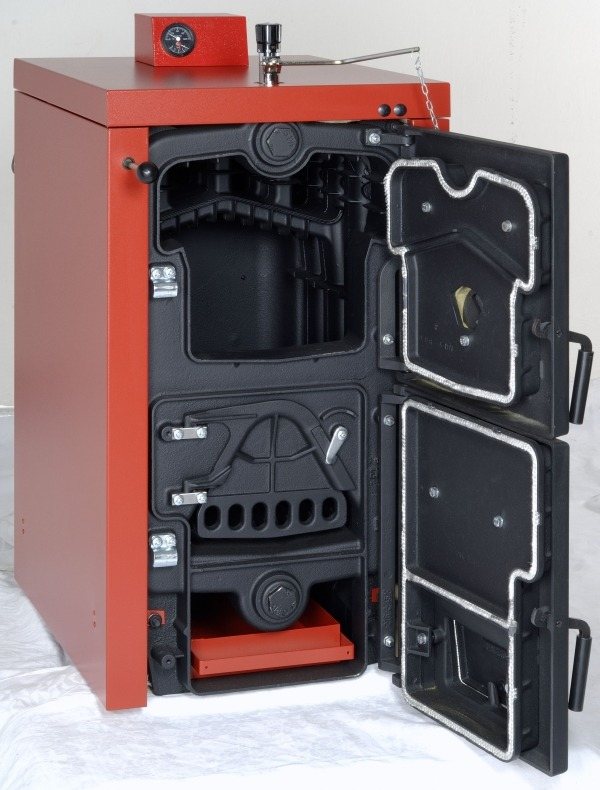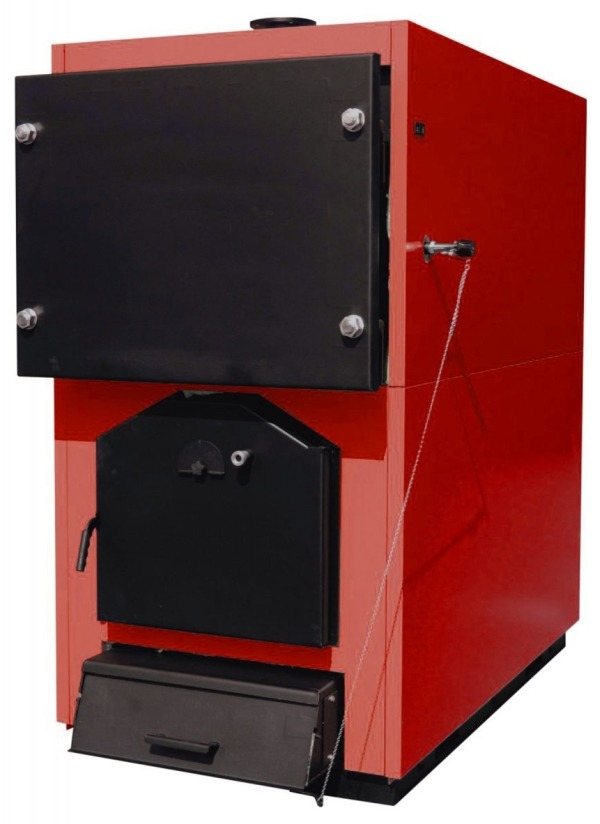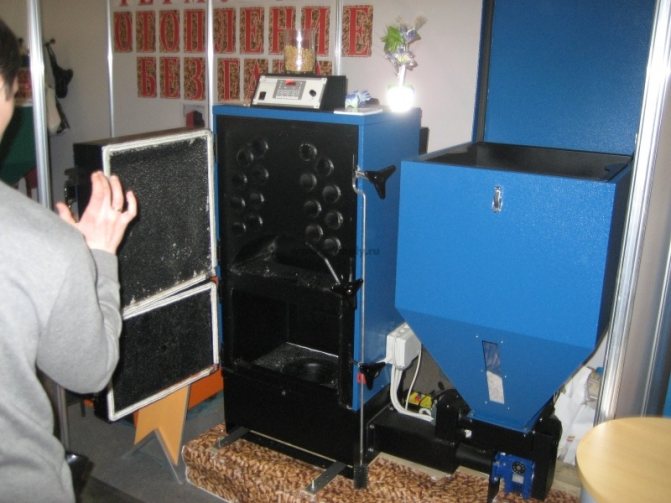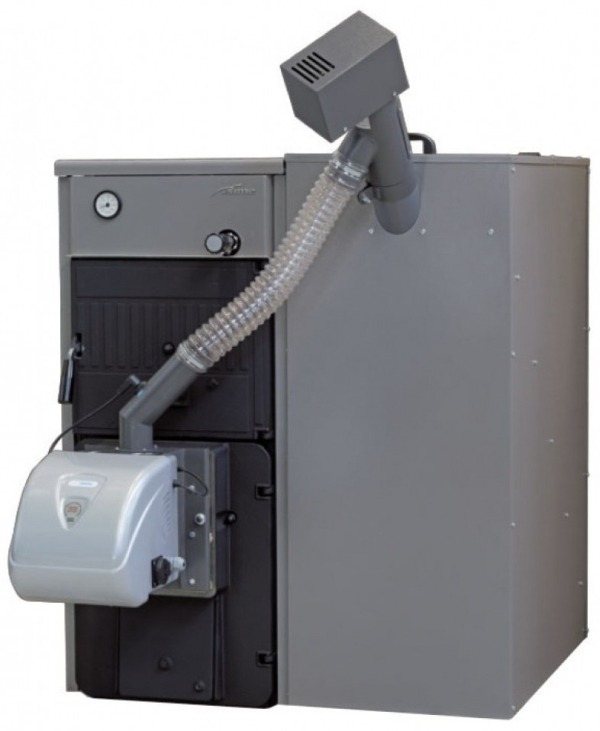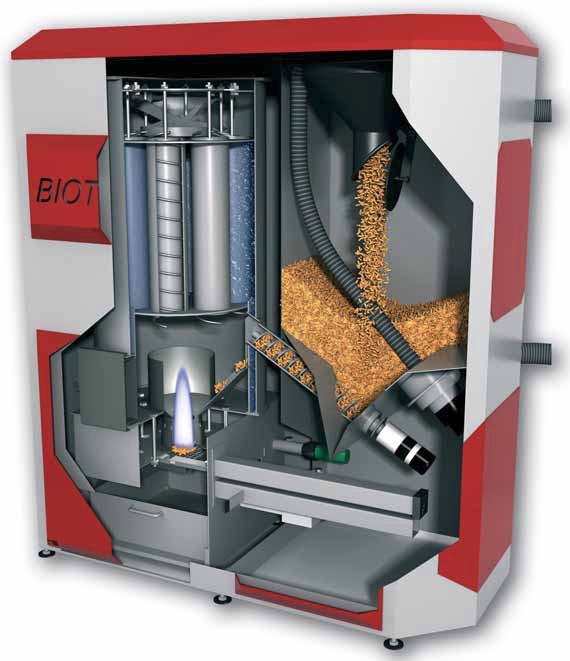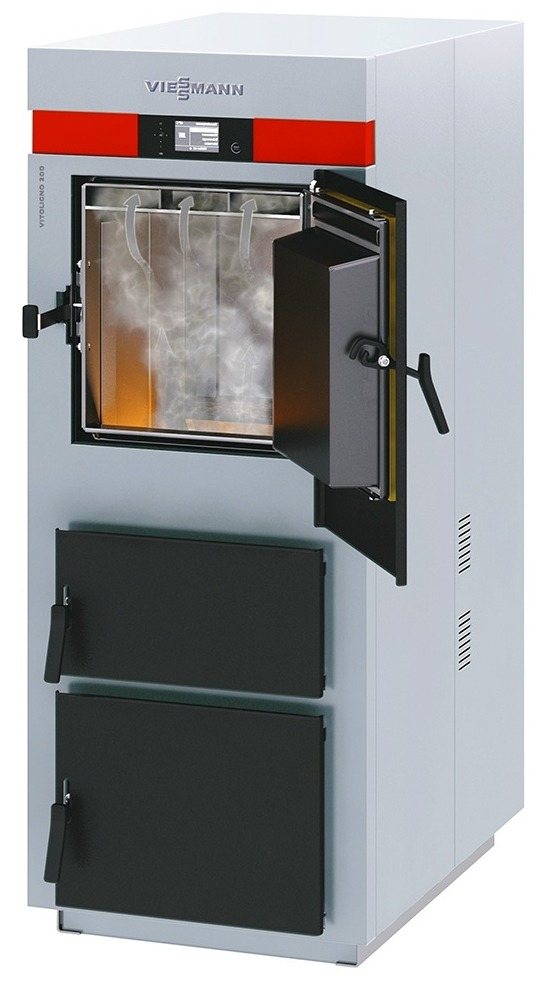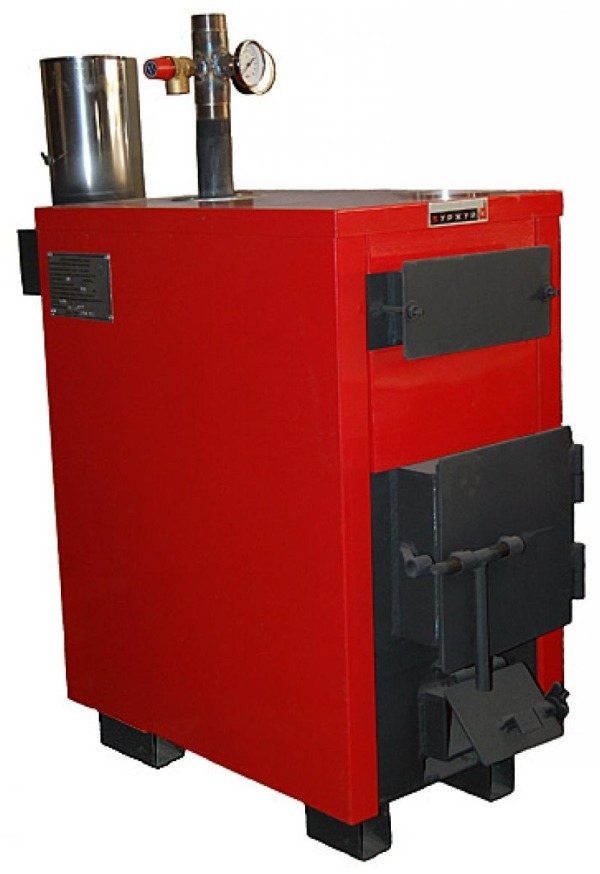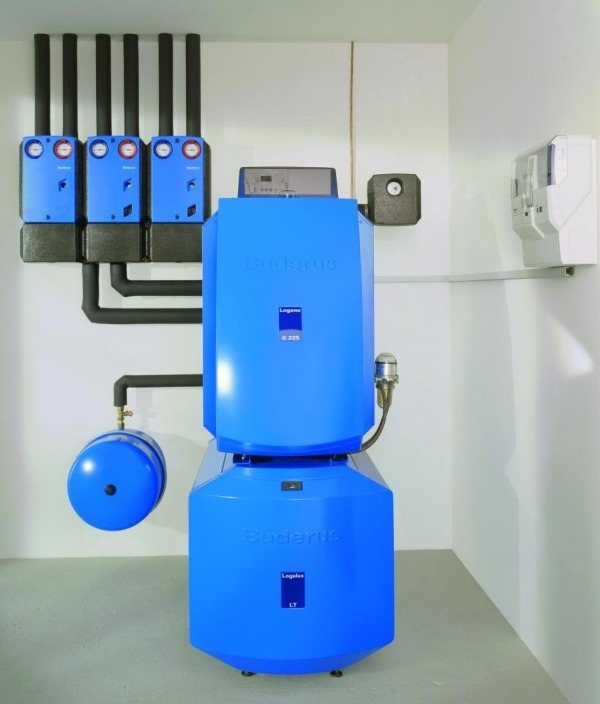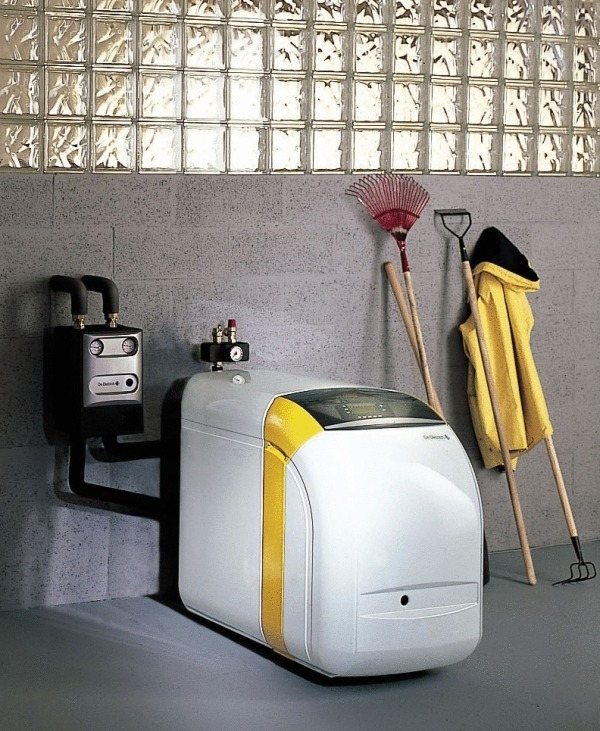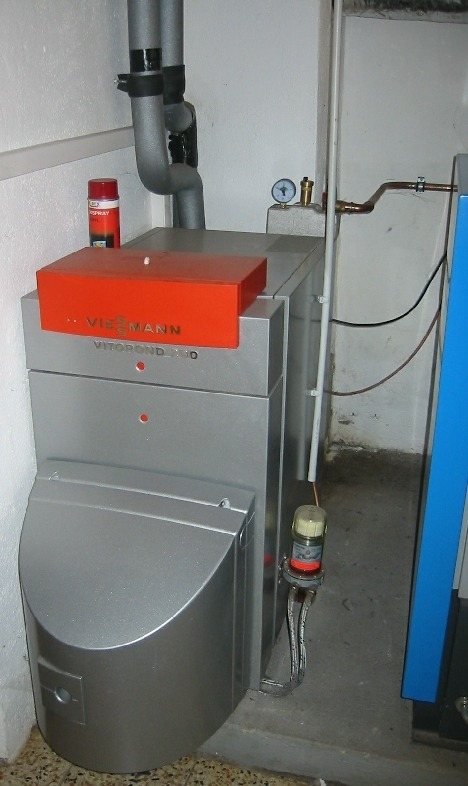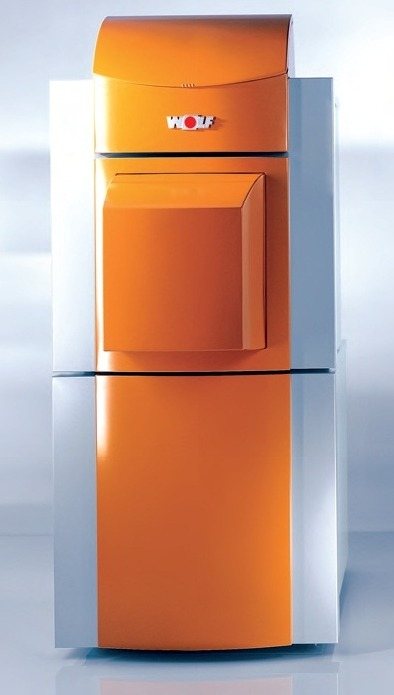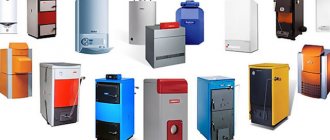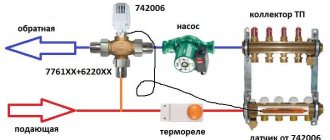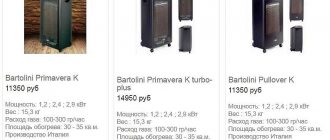Published: 26.04.2013 Heading: Materials and technologies Hits: 8388

Heating boilers for a private house - heating system
What to focus on when choosing a boiler for heating a country house? In order not to get lost among the models and parameters of boiler equipment, you need to put the question point-blank: How much will it cost to heat a house?
Statistics speaks of the unconditional victory of gas over other types of fuel used for heating residential buildings. Gas boilers and water heaters are installed in almost half of the houses in the low-rise sector (48%), in 30% of cases - liquid fuel boilers, only 12% of houses are supplied with heat from solid fuel boilers, and, finally, least of all the owners of suburban housing (10%) entrusted the care of your comfort to electric boilers.
These figures are explained very simply: main gas is the cheapest type of fuel... But does this mean that the problem of choosing the ideal fuel for boiler equipment has been solved once and for all? Of course not, because the same figures indicate that most of the country's private houses are not heated with gas.
Half of the owners of private houses in Russia use mains gas for heating. But the other half is forced to look for an alternative.
Calculations of gas producers help to understand the reasons. According to Gazprom, the level of natural gas gasification of settlements in rural areas in 2010 did not reach half (46.7%). The averaged data hide the gap by region: the Moscow region is connected to gas by 98%, the Kirov region by 30%, and the Novosibirsk region by barely 5%. Here, however, it is worth noting that in many cases the main gas is supplied to settlements only in the form of a hydraulic fracturing (gas control point), but supplying it directly to the house is already a problem for the owner of the house, and the cost of connecting gas to the house starts from 200 thousand rubles. rub. and reaches 400 thousand rubles. And this is just about laying pipes 50-100 m long.
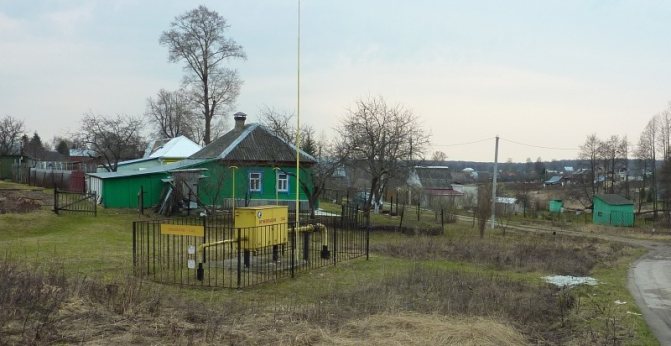

The main gas for many settlements only in the form of a hydraulic fracturing (gas control point), this is the end of gasification. Few people can afford to supply gas to their homes.
The prospect of an improvement in the situation is far from always visible, because we are talking only about the gasification of settlements, the number of residential buildings in which is more than 200. A fifth of the country's territory is not included in the gasification programs at all. It is clear that mostly sparsely populated territories remained without main gas. But the economically justified choice of the type of boiler turns out to be in practice today not as simple a matter as in theory.
Comparison of operating costs for heating a house with an area of 300 m²:
| Options | Electricity | Diesel | Liquefied gas |
| Fuel consumption per year, kW * h | 80000 | 80000 | 80000 |
| Fuel cost, rub / l | — | 25 | 11 |
| Heat energy, kW / l | — | 11.6 (37.7 MJ / kg) | 7.2 (46.3 MJ / kg) |
| Cost, rub / kW * h | 2.66 (with electric stoves) | 2,15 | 1,53 |
| Costs per year, rub. | 212800 | 172000 | 122400 |
Gas boilers - leaders in heating a private house
The golden rule is: if there is main gas, you need to install a gas boiler... There are no competitors in terms of operating costs for heating main gas. But there are spots on the sun too: the initial investment in the installation of gas equipment is tangible. It will require project development, piping, purchase and installation of heating radiators and the gas boiler itself. Expenses can exceed 350,000 rubles, excluding the cost of connecting to the gas pipeline.
The gas boiler is put on for many years, and not as a temporary solution.Boilers of this type dominate the market and are divided into groups by the type of installation (wall-mounted, floor-standing), by the type of burner (atmospheric, pressurized), by functionality (single-circuit and double-circuit - in addition to the heating system, they also provide hot water supply for hot water supply).
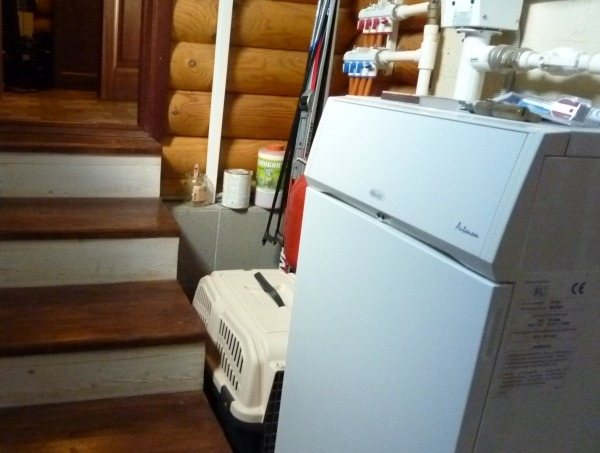

Gas floor-standing single-circuit boiler Beretta Novella Avtonom
They are produced by a large number of companies: BOSCH, BUDERUS, VIESSMANN, DE DIETRICH, CTC, ROCA, PROTHERM, AEG, VAILLANT, HERMANN, BERETTA, BAXI, FEROLLI, DAKON, NAVIEN, TITANIUM. Today a gas boiler of a well-known brand is very reliable, and if installed correctly, it practically does not break. The opinion that only domestic models are fully adapted to our conditions is not entirely correct.
The main difficulties of the Russian heating system of a private house: low gas pressure, power surges (unpredictable long outages) and requirements for the type of coolant.
For example, wall-mounted gas boilers Vaillant AtmoMAX Plus are designed for a nominal main gas pressure of 13-20 mbar (0.013-0.02 kgf / cm²). With a reduced pressure, the automation switches off the unit, and after the resumption of gas supply with the required pressure, it also automatically turns on. The technique is doing just fine, but people run the risk of being left without heat in the winter. In such cases, they install backup heating equipment or select a boiler designed to work with low pressure gas. Currently, such models are easy to find: a Buderus Logano G234WS floor-standing boiler, a Navien Ace wall-mounted boiler and others, designed to operate at a gas pressure of 10 mbar.
Power outages occur even more often than gas interruptions, as a result of which the automation of modern computerized boilers is turned off. Most of Russian units with atmospheric burners are not afraid, they are non-volatile. Operation of imported equipment in this situation is possible in manual mode. An interesting solution was proposed by the specialists VERETTA and DAKON. Electricity for powering the automation is generated by a built-in heat generator.
Another problem in Russian conditions arises due to the fact that many foreign manufacturers remove their equipment from warranty service when using propylene glycol rather than water as a heat carrier. And in summer cottages and cottages of periodic residence, the temperature at the level of 5 ºС at subzero external temperatures is maintained precisely due to the use of glycol antifreeze. And therefore, if you intend to pour antifreeze into the heating system, ask if this is permissible for the boiler of the selected model.


A remote control unit with an information display allows you to easily adjust the mode and control the operation of the boiler
Wall hung gas boilers 1.5-2 times cheaper than floor options, but also with performance, it can be the same. For example, a wall-mounted double-circuit boiler Baxi LUNA-3 Comfort 310 Fi with a capacity of 31 kW costs about 40,000 rubles, and its floor-standing analogue Baxi SLIM 2.300 Fi for 29.7 kW is twice as expensive - 70,000-80000 rubles. But still, do not forget that wall-mounted gas boilers are limited in power (up to 42 kW). They are used for heating and hot water supply of a country house with an area of up to 300 m². An important factor in saving on operating costs is the presence of stepwise or smooth power regulation. The boiler usually operates at full capacity only for one fifth of the heating season. The rest of the time, the reduction in power leads to significant savings.
Wall mounted gas heating boilers:
ARISTON THERMO BS II - double-circuit wall-mounted gas boiler |
BAXI Nuvola - double-circuit wall-mounted gas boiler |
DE DIETRICH Innovens Pro MCA 25 - gas wall-hung condensing boiler |
BAXI Luna 3 - double-circuit wall-hung gas boiler with a closed combustion chamber |
BOSCH Condens 3000 W - gas wall-mounted double-circuit condensing boiler |
VIESSMANN Vitodens 200-W - wall-hung gas double-circuit condensing boiler |
A kind of trump card of pressurized boilers is a replaceable fan burner. It costs a lot and is sold separately.In this case, you can purchase both a "native" burner, and an analogue of a third-party manufacturer (BALTUR, ECOFLAM, WEISHAUPIGIERSH, RIELLO, LAMBORGIANI, BENTONE). The fan burner solves many pressing problems and works for the future.
Firstly, it allows the boiler to function with high efficiency at a reduced gas pressure and to regulate its power. Secondly, a set of replaceable burners provides flexibility in the choice of fuel.
One and the same pressurized boiler will run on gas or diesel thanks to the replacement of a single unit - the burner. It is practical if the main gas is only included in the development plans of the settlement. For the first time, they purchase a supercharged unit, a diesel burner and heat the house with liquid fuel (as an alternative, you can use an electric boiler). When the long-awaited gasification becomes a reality, all you need to do is change the burner. The cost of a two-stage gas burner Baltur BTG 6 R (30.6-56.3 kW) is about 26,000 rubles, a diesel Baltur BTL 6 R (31.9-74.3 kW) - 24,000 rubles, a multi-fuel burner (gas / diesel ) Baltur Comist 26 SP (130-340 kW) - over 100,000 rubles.
Burner types for boilers:
Atmospheric gas burner works on the principle of a conventional gas stove, they differ only in the form and method of ignition |
In condensing boiler burners, a special design allows surface combustion rather than flare combustion. |
Blowing gas burner - air for the mixture is supplied by a fan |
Combination (universal) or dual-fuel burners |
The vanguard of gas boilers are gas condensing boilers. Such units are produced by many companies, for example: BUDERUS, VIESSMANN, VAILLANT, BOSCH, etc. The heat exchanger uses the heat of the burnt fuel to the maximum, as a result of which the efficiency increases by 10-15% compared to traditional models (with atmospheric or fan burners). This results in fuel savings, but the operational advantages require significant initial investments: a Viessmann Vitodens 300-W-26 boiler with a capacity of 26 kW costs about 120,000 rubles. In the middle lane and in the northern latitudes, condensing gas boilers do not always show maximum performance. An economical mode of operation is ensured only when a heat carrier with a temperature of 40-50 ° C is supplied to the heating circuit, and Russian conditions may require a higher temperature.
Viessmann Vitocrossal 300 - floor standing gas condensing boiler |
BAXI POWER HT - floor standing condensing gas boiler |
Today, gas condensing boilers are becoming more and more popular, which provide a more efficient energy conversion process when burning gas. Their energy conversion factor reaches 109%. The principle of utilization of the latent heat of vaporization helps to significantly reduce the consumption of gas fuel for the same power of heat supplied to the consumer. Among other things, the operation of a condensing boiler, unlike a traditional one, does not have a negative impact on the environment. The modern design of devices allows you to switch from natural gas to liquefied gas without replacing nozzles and associated service operations. In addition, models of boilers using biogas are already beginning to appear - a gas obtained by fermentation and disposal of natural waste and animal waste products, for example, on a farm.
Comparison of fuel costs per year depending on the boiler efficiency (heating area 200 m²):
| Fuel type | Efficiency 80% | Efficiency 95% | Difference per year |
| Natural gas | RUB 26,000 | RUB 20,000 | 6000 rbl |
| Electricity | RUB 195,000 | RUB 150,000 | RUB 45,000 |
Pros and cons of different types of boilers
- Gas. They run on cheap fuel, but gasification of the facility is a big problem. You need to collect a lot of papers, walk around the organizations and pay a considerable amount of money. It is impossible to discount both the explosiveness of gas and the pressure drop in the mains. However, after going through all the difficulties, the owner receives modern, obedient technology with a wide range of models and functions.
- Electrical. As already mentioned, the electric boiler does not need a chimney, it is easy to install it like a regular household appliance. These devices are often packed with various devices and have a stylish look. But electricity is expensive, and if it is turned off, the house may be left without heat.So, an additional UPS unit is required for the boiler, which can cost as much as the heater itself (more details here).
- Solid fuel boilers. They practically do not lend themselves to thermoregulation, need cleaning, constant supervision (except for automatic pellet). Fuel is becoming more expensive in many places, and it is more and more difficult to get it. But these are also the most reliable devices. They have a wide power range, are simple and unpretentious. For many, firewood or coal is the most familiar and "native" way of heating.
- Single-circuit and double-circuit. Combining two fixtures is convenient. Saves space in the house. However, there is an objection that due to the presence of a DHW circuit, the main functions of the boiler often fail. Also, make sure that buying such a device is really beneficial. It happens that the prices for them are so overstated that a separate single-circuit boiler and a boiler are cheaper.
- Turbocharging or atmospheric burner... Forced gas removal works more efficiently, there is no risk of carbon monoxide poisoning, oxygen consumption in the room. A bulky chimney can be replaced with a compact coaxial one. It is only necessary to take into account that such equipment is volatile. Either confidence in the reliability of the local power supply or an additional UPS is required.
- Heating element, electrodes or induction? Heating elements of all these options are the most short-lived, as they are prone to scale formation. And induction is considered the most reliable. However, the prices for induction boilers are so high that many people decide that it is easier to replace heating elements or electrodes several times (which dissolve over time). It is also worth mentioning that not every quality of water is suitable for electrode models. And the heating element can function, including in antifreeze.
- Water circuit or convection... The choice is obvious if the house is large - you cannot do without a water circuit. But if the house is small, consists of several rooms, you can also use a convection device. He warms the air around him and can heat the room in which he stands.
- Automatic feeding or manual. To organize an automatic feed, more space will be required, since it will be necessary to install a large tank next to the boiler. And not all types of fuel are suitable for automation, most often they are small free-flowing pellets.
- Long burning time. Real long-term boilers with a small amount of fuel have a long period of operation. But you need to know that it may not be easy to learn how to use such a boiler correctly. With the wrong firebox style, the unit will not show everything it is capable of.
- Reburner units you cannot load a new portion of fuel until the previous cycle has completely burned out and the owner cleans out the ash. By the end of such a cycle, the combustion power is significantly reduced and if there are crackling frosts on the street, the household will freeze.
- Additional functions. You might think that the more features the better. But this is not always the case. Sophisticated electronics are capricious, cannot stand power outages, and generally depend on electricity. The truth of life is that the more electronics there is in the heating device, the more vulnerable it is, and more often it breaks down. Therefore, owners are looking for mechanical alternatives to electronic sensors (for example, bimetallic draft regulators are pure mechanics).
Gas boiler, but what gas?
Gas boilers operate not only on main gas (methane), but also on liquefied gas in cylinders (propane-butane mixture)... After a specialist has replaced the nozzles and set the pressure settings on the gas valve, the unit can easily switch from liquid gas to normal gas or vice versa. But for the user himself, the situation is changing dramatically.
In terms of operating costs and associated costs, liquefied gas is significantly inferior to the mainline gas and appears as if in a different echelon, where it competes with diesel and solid fuel.If the main gas pipeline delivers fuel directly to the boiler, then when using liquefied gas, the consumer will have to solve the problem of fuel delivery and storage himself. You will need to purchase and install a gas tank on the site, preferably with an extended neck of the tank to maintain productivity in winter, do not forget about the Russian frosts. To heat a house with an area of 200 m², a gas tank with a volume of 2700 liters is needed, for a house with an area of 400 m² a tank of 4800 liters is more suitable. The total cost of installing a gas tank (4800 liters), including earthworks and commissioning, starts from 200,000 rubles. The price of propane-butane in the Moscow region, taking into account delivery, is about 15 rubles / liter.
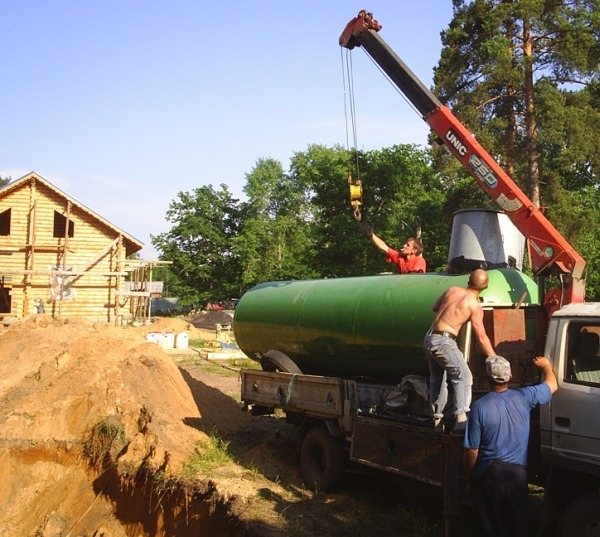

Installing a gas tank
Calorific value of various fuels:
| Type of fuel | Calorific value |
| Dry firewood | 3,900 kW / kg |
| Wet firewood | 3,060 kW / kg |
| Anthracite | 5,800 kW / kg |
| Brown coal | 2,900 kW / kg |
| Diesel fuel | 11,700 kW / kg |
| Natural gas | 10,000 kW / m³ |
| Liquefied gas | 20,800 kW / m³ |
| Eurodrova | 5,300 kW / kg |
| Pellets | 5,000 kW / kg |
Is liquefied gas a worthy alternative to mainline gas?
The price of liquefied gas (propane-butane mixture) is significantly higher than that of the main gas (methane), but if there is no choice; then today it is quite an interesting alternative to diesel fuel, electricity and solid fuel pellets. The only nuance associated with liquefied gas is its storage. The fact is that the installation of a gas holder is a rather expensive pleasure, and it makes sense to bury money in the ground only if the main gas is not foreseen even in the future. Working with cylinders and constantly changing them in a house with an area of more than 150 m² is very laborious, since in winter, in frosts, one cylinder of 50 liters will be enough for a maximum of one or two days.
In addition, it must be remembered that it is not recommended to remove more than 10 kW from each cylinder, otherwise freezing of the cylinder and the gas reducer may occur. For example, for a 24 kW boiler, it is better to put 3 cylinders in parallel. In general, the safety requirements for such systems are spelled out in the regulations. For example, cylinders cannot be placed in basements, since liquefied gas is heavier than air. At least once every six months, you need to check the tightness of gas reducers and gas pipelines, and even better, install a gas leak detector. Many models of gas boilers can operate on liquefied gas, if you change the nozzles and reconfigure the equipment, but a specialist must perform the adjustment.
How to choose a gas boiler?
This task is not as easy as it seems at first glance. Everyone wants to buy equipment that is reliable, economical and durable. On a search query - gas heating boilers, wall-mounted double-circuit prices, reviews, the browser will lay out thousands of sites, but it is difficult to find an answer in them. The thing is that this choice is purely individual. The owner must clearly understand what kind of heating system he wants to get. For example, do you need or do not need a hot water system, underfloor heating, or an indirect heating boiler? How much power is needed to provide space heating at the lowest outside temperature? Do not hesitate to consult with experienced specialists, but in order to ask them the right question, you need to decide what kind of heating system you plan to create.
Solid fuel heating boilers
Residents of regions remote from the center, most likely, will prefer to heat their houses with solid fuel, since firewood, peat or coal are generally available, in Russia the reserves of these resources are huge. Heating a house with an area of 150-200 m² per season requires 22 m³ of firewood or 6 tons of coal. The process of laying firewood in the firebox does not lend itself to automation, therefore a solid fuel boiler may well do without modern computer automation, and therefore without electricity.
Solid fuel boilers:
Solid fuel boiler from the BOSCH company - Junkers Supraclass SW |
Solid fuel boiler from the BUDERUS company - Logano S111 |
Solid fuel boiler from the JASPI company |
Solid fuel boiler from Protherm |
Solid fuel boiler from VIADRUS - U 22 |
Solid fuel boiler from the WIRBEL company - Eko-EL |
The result is a completely autonomous system, ideal for those who rely only on themselves. But this also becomes the main disadvantage when the conditions are not so harsh and the desire for comfort is justified. After all, solid fuel burns quickly (coal in 6 hours, firewood is twice as fast), so you have to regularly visit the boiler room in order to throw firewood.
In addition to firewood, they use coal, peat, briquettes (wood, peat, coal) or more modern ones - pellets... All these fuels differ in characteristics (heat transfer, burning time, ash content, volatile matter release), cost, packaging, ease of storage and use.
Pellet boiler models:
Pellet-fired solid fuel boiler BIOMASTER CS |
Solid fuel boiler operating on pellets SIME Solida 8 PL |
| Solid fuel boiler Junkers Supra Pellet |
Solid fuel pellet boiler from BIOTECH |
The BIOTECH boiler can be operated using a screw and / or pneumatic pellet feeding system from the hopper to the burner.
For use in solid fuel boilers, it is increasingly recommended to use various fuel briquettes, in Europe they have been produced and used for heating houses for several decades, but for Russia it is still a curiosity. Although we already have a fairly new concept - eurowood, that is, fuel briquettes from pressed sawdust and shavings, are sold in packs of 10 kg. One ton of such briquettes takes 1.5 m³ and gives the same amount of heat as 5 m³ of birch firewood, forming ten times less ash during combustion. The cost of wood fuel briquettes is from 6,000 to 8,000 rubles per ton.


Eurodrova - fuel briquettes from pressed sawdust
Coal briquettes packed in bags of 15-20 kg and offered at a price of 8,000 to 9,000 rubles. per ton.


Coal briquettes
Peat briquettes in polypropylene bags of 25 kg each cost 5,000 rubles per ton.


Peat fuel briquettes
The manufacturers of solid fuel boilers are now quite different both among foreign companies and among our Russian ones: ATMOS, BUDERUS, DAKON, BOSCH, OPOR, VIESSMANN, WIRBEL, KONORD, KIROVSKIY ZAVOD.
To facilitate the stoker's task, boilers with an enlarged combustion chamber are produced. So, for example, the Wirbel EKO-14 model (power 14 kW, price 38,000 rubles) doubles the intervals between fuel loading compared to a conventional boiler.
Technological innovations also open up new perspectives - long-burning pyrolysis (gas generating) boilerscharacterized by high efficiency (up to 85%) and the ability to control the fuel combustion process. Their work is based on the principle of gasification of wood, the fuel in them does not burn, but smolders, so it is enough to heat such a unit twice a day. The disadvantage is dependence on electricity required for automation.
Viessmann Vitoligno 100-S - floor standing solid fuel pyrolysis boiler |
Bourgeois-K T - floor-standing solid fuel pyrolysis boiler |
A domestic-made Bourgeois-K T-30 boiler with a capacity of 30 kW costs about 65,000 rubles, an imported Viessmann Vitoligno 100-S of the same power - about 140,000 rubles.
Another invention that makes it possible to automate the process of loading and burning solid fuel is pellet boilers. Pellets Are wood pellets with a diameter of 6-8 mm and a length of up to 50 mm, produced from sawdust, shavings or husks. The calorific value of pellets is 1.5 times higher than that of dry wood. But the main thing is not even this, but the flowability of the granules, due to which the fuel loading can be automated. The pellets are stored in a waterproof hopper, from where they are conveyed by auger to the burner. The built-in photosensor stops feeding when the combustion chamber is full. The decisive disadvantage of such fuel pellet boilers is the still rather low availability of granular fuel - pellets. But the growth of pellet production is higher every year, and more and more such industries begin to develop in the regions.


Pellets - fuel pellets, compressed cylindrical sawdust
Today, hundreds of enterprises are already engaged in the production of pellets. However, before purchasing a pellet boiler, be sure to decide on reliable fuel supply channels from the manufacturer. The cost of granules is from 5000 rubles / ton. The fuel consumption of a 25 kW unit is approximately 3 kg / h. Pellet models are more expensive than standard solid fuel ones. The OPOR BioComfort boiler for 24 kW costs from 140,000 rubles, Astor (25 kW) - 120,000 rubles.
Solid fuel or liquid fuel? The costs are comparable, the choice is influenced by: the availability of fuel, the possibility of its storage, the level of desired comfort.
Types of boilers
The first and main distinguishing feature is on what fuel is the heating operation preferable:
- on solid (coal, firewood, pellets, briquettes);
- gas;
- electricity;
- liquid (rarely used for residential buildings, but still takes place).
We will consider the advantages and disadvantages in more detail later, but for now, mark one or more suitable options.
Remember that there are also combined boilers (if you cannot decide between the two types of fuel, you can look for a unit in which both are combined).
Power
The second parameter is power. Calculating it may not be as easy as it sounds. Sometimes it is advised to simply take 1 kW of power per 10 m2 of house area. But this is only in a new, well-insulated house and in temperate latitudes.
If the housing has specific features, or the climate presents surprises, all this must be taken into account when buying a heater. More details about heat engineering calculations here.


Floor standing boiler in a private house
Knowing the power and type of fuel, you can proceed to study the market. Which manufacturers offer similar equipment, which models, and at what price.
Within each species, there are smaller differences that must also be taken into account.
Single-circuit and double-circuit
The symptom applies to all types of boilers, regardless of the fuel.
Single-circuit models are used only for heating. The hot water supply line of the house runs in the double-circuit.
If preference is given to combining useful functions in one housing, then the power to the device must be added to heating hot water.
In recent years, Russian manufacturers of heating equipment have become more popular, as the equipment meets all quality standards. The next topic will focus on Conord gas boilers - user reviews and an overview of the characteristics.
The device, manufacture and installation of a pellet boiler is the topic of the next article.
Induction heating boilers are not very popular, but are gradually coming into use. Following the link, we will analyze the advantages of such units and the features of operation.
Wall or floor (gas, electric)
Low-power boilers are often made compact, wall-mounted. Such a device can be built into kitchen furniture, they have a pleasant design and modern control.
Outdoor units are more powerful. For them, you need to equip a separate room - a boiler room, a good base and ventilation (however, ventilation is needed for all types).


Wall-mounted boiler piping
Turbocharging or atmospheric burner (gas)
Atmospheric units use air that comes from the room for the combustion process, and a high chimney creates thrust. If there is turbocharging, it means that the fuel chamber is isolated from the premises of the house, the air is taken from the outside, and the fan provides traction.
Three types of electric boilers
There are three types of electric boilers:
- With heating element (tubular heater that heats the coolant in flow mode).
- With electrodes (electrodes immersed in the coolant heat it due to their resistance).
- Induction (heats up the induction coil, which does not come into contact with the liquid).
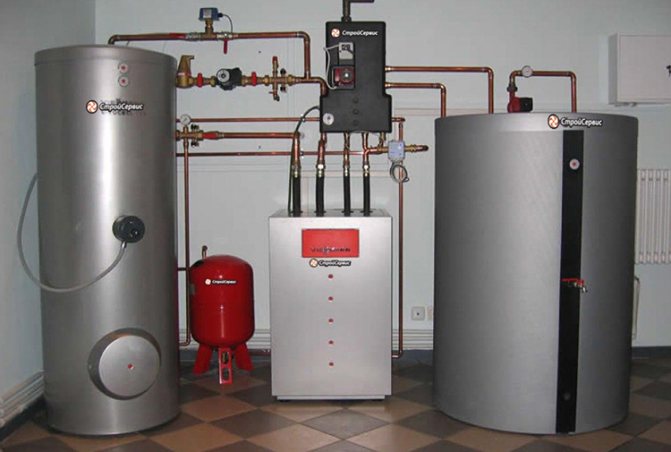

Heating with electricity
The electric option is most often chosen by people with considerable income, since electricity is the most expensive form of energy.However, everything pays off with the simplest control, minimal maintenance and installation of the boiler without a chimney.
Solid fuel boilers of various modifications
A variety of devices are presented under the general name "Solid fuel":
- normal burning and long;
- for hot water heating and convection (air);
- with manual loading and automatic fuel supply.
Long-burning boilers are an excellent option for those who would not like to devote too much time to storing business.
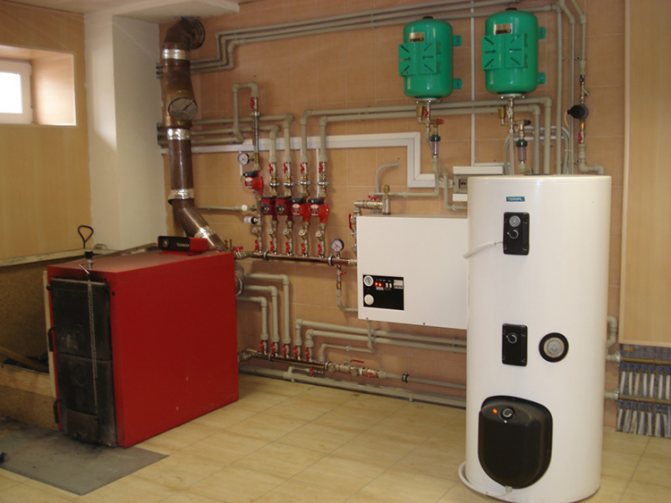

Solid fuel boiler after installation
Be careful! For devices of long burning, or pyrolysis, they tend to give out simply large boilers with a large load, or convection ones (such as Buleryan, Breneran and others).
Chimney
The classic chimney (or gas outlet) pipe is vertical, passing through the roof. Its length must correspond to the parameters of the boiler, the shape of the roof and the position in relation to the ridge.
A coaxial chimney is an easier way to exhaust smoke. A small section of a double-layer horizontal pipe can extend through the wall. The pipe is used for simultaneous removal of gases and intake of clean air. Only possible in conjunction with turbocharging.
Liquid fuel
Oil, diesel and other liquid fuel devices are more often used in industry, or at auto repair stations. But still there are models for home use. It makes sense to purchase such a unit only if stable access to this kind of fuel is possible.
Most often they are made by two-circuit turbocharged.
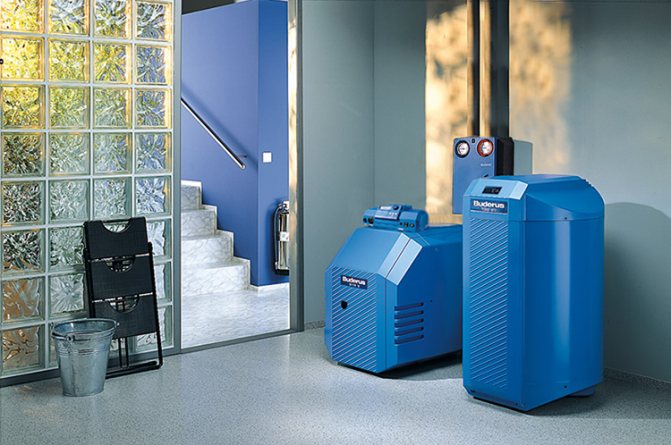

Diesel unit
Combined boilers
The combinations can be different:
- gas with electricity;
- gas with wood and coal;
- solid fuel with diesel;
- electricity with any other fuel, etc.
The owner can significantly save and insure himself for different situations. For example, buy a solid fuel with a reserve gas burner, if he knows that in the future his area will be supplied with gas. Or buy a boiler on electricity in combination with any other type of fuel, knowing that there may be power outages in its area.


Combined boiler in the heating system
In addition, the electrical component can be useful if the "Day - Night" payment system is used, when night rates are much cheaper than day rates.
It is not at all necessary that the combined option will cost more. Often their price does not exceed the average for other boilers.
Materials (edit)
An important factor characterizing the reliability of the device is what critical elements are made of, such as a heat exchanger. Copper is recognized as the most reliable - it has an excellent thermal conductivity and does not rust. Stainless steel and cast iron are in second place, and ordinary steel is the most budgetary option.
The firebox doors are best of all - cast iron. This ensures that they will not be driven away by heat.
The material and design of the case is more a matter of taste. Housings are rarely exposed to physical stress (except at the time of installation), they do not come into contact with high-temperature parts and do not wear out.
Additional functions
For beauty, convenience and safety, many useful functions have been developed:
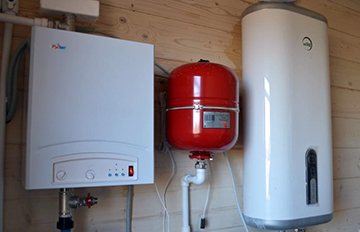

- Electronic and remote control.
- Possibilities of programming modes.
- Frost and overheating protection.
- Thermoregulation of both heating and water supply.
- Flame extinguishing protection, from lack of draft.
- Self-diagnosis and others ...
Some of them are really useful, while others can be dispensed with.
Diesel version of heating boilers
Liquid fuels also have their competitive advantages. Although diesel fuel is already not cheap, the installation of boilers with diesel burners in "standby mode" is popular, when the main gas is planned to be brought to the house in the near future, but no one knows exactly when it will come.As soon as the gas is supplied to the house, the burner is changed to a gas one, and the diesel one remains in reserve, which provides the heating system with higher reliability. Liquid fuel boilers are produced by many companies: ACV, BAXI, BIASI, BUDERUS, SNAPRE, STS, DAKON, DE DIETRICH, FERROLI, FONDITAL, KITURAMI, LAMBORGHINI, MORA, PROTHERM, ROCA, SIME, VAFILLANT, VOL. KIROVSKIY FACTORY.
Oil fuel models of heating boilers:
Buderus Logano G125SE - floor standing oil boiler |
DE DIETRICH GT 120 - floor standing oil (gas) boiler |
VIESSMANN Vitorond 200 - oil (gas) boiler with gas or oil burner |
Wolf CNK - oil (gas) boiler with forced draft gas or oil burner |
The cost of the Viessmann Vitola 200 VB2A model (power 33 kW) is from 75,000 rubles, and the domestic diesel boiler KChM-5-K-38 (38 kW) is about 55,000 rubles. For storage of liquid fuel, containers are installed (usually plastic, block type). In the boiler room itself, it is permissible to put a tank with a volume of no more than 750 liters. Such a container can be purchased for 10,000 rubles. In the Moscow region, diesel fuel is supplied for 23,000 rubles. per ton. But diesel prices are constantly changing depending on oil prices and the season.
It is necessary to note one more important factor, albeit not financial: diesel fuel has a persistent smell, which will be constantly present in the boiler room and you need to be prepared for this.
The closest to gas boilers in terms of technical and functional characteristics are liquid fuel boilers, which is explained by the following factors:
1) High efficiency. This indicator for a diesel and gas boiler is almost the same and reaches 91-92%.
2) Possibility of autonomous operation of the boiler house on diesel fuel. The choice of control panels - from the simplest mechanical to programmable weather-dependent.
3) Possibility of quick transfer of the boiler from liquid fuel to gas if it is connected.
4) The environmental indicators of liquid fuel boilers, of course, are slightly lower than that of gas boilers, but they are not critical. The disadvantages of this equipment include rather high costs for the organization and operation of the boiler room.
How to choose a heating boiler for a private house?
In order to have a complete picture and compare heating boilers for a private house in all respects, we recommend drawing up a small diagram on paper where you can enter the characteristics yourself and evaluate, for example, on a five-point scale, each option.
Try to collect as much information as possible about the heater and local energy resources.
Find out how much a particular fuel costs, whether users are satisfied with its quality, whether there are supply disruptions, etc.
Electric heating boilers
Against use electric boilers High operating costs are unambiguous evidence. In addition, there is a serious infrastructural limitation: the power allocated to the consumer often does not exceed 10 kW, and this may not be enough to heat a large house. It should be remembered that boilers with a power of 7 kW or more require a three-phase power supply. Despite this, electric boilers are in steady demand and are manufactured by many companies STS, DAKON, KOSPEL, PROTHERM, ROCA, WESPE HEIZUNG, EVAN, RusNIT.
Since in some circumstances, namely a boiler that runs on electricity turns out to be the best, but temporary solution.
At first, the initial investment is relatively small. For example, the domestic model EVAN Standard-Economy of the EPO-24 series (power 24 kW) costs only 15,000 rubles, and the Protherm SKAT 9K (9 kW) version will cost 24,000 rubles. But in the house itself, for heating with electricity, you will need to conduct a powerful electrical wiring. By entrusting the boiler with hot water supply, it is possible to organize a non-liquid heating system on electric radiators (the total cost of equipment and installation of such a solution starts from 60,000 rubles).
Secondly, with a two-tariff electricity payment scheme using an electric boiler only at night turns out to be a relatively inexpensive pleasure (2-3 times cheaper than during the day).So, in practice, the use of an electric boiler is quite economically profitable if it works to heat a small house as a backup device, at a night rate, or, as they say, for the first time, until the main gas is connected.
Electricity choice if a workaround is required and there are discounted night electricity rates.
In addition to traditional models on heating elements (boilers), they produce electrode boilersthat consume 20% less electricity due to direct heating of the coolant. For example, a domestically produced electrode boiler Galan Geyser-9 with a capacity of 9 kW costs only 6,000 rubles.
Classification
The types of heating boilers are, of course, classified not only by the type of fuel.
Gas
- The boiler can be wall-mounted or floor-mounted. Wall mounting is typical for relatively low-power devices (up to 100 kW).
- The material of the heat exchanger can be steel, cast iron and copper. Steel is the cheapest, but has a limited service life; copper and cast iron are more fusible and are forced to limit the temperature regime.
- The burner can be atmospheric, taking air from the room, and closed - receiving air and removing combustion products through a coaxial air duct passing through the outer wall.
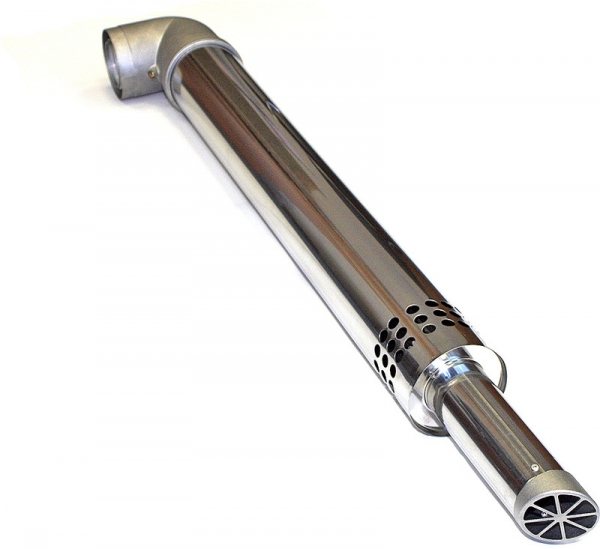

The coaxial chimney serves for air intake from the street and removal of combustion products.
- The single-circuit boiler is intended for heating only; double-circuit has an additional heat exchanger for the needs of hot water supply.
Nuance: single-circuit in the presence of an indirect heating boiler perfectly provides a house or apartment with hot water.
- Electronic ignition provides convenience and economy, but devices with manual ignition can work without power supply at all.
- Finally, condensing boilers, in contrast to classical ones, provide 9-11% higher efficiency; at the same time, they are much more expensive and limit the temperature of the return pipeline to 30-40 degrees.
Solid fuel
The device of a classic solid fuel boiler is not difficult: firewood burns in the firebox, the flame heats up the heat exchanger tank, hot water gives off heat to the batteries. Its main problem has already been mentioned: every few hours you have to load firewood or coal and remove ash.
There are, however, a couple of solutions that allow you to extend the operating period of the boiler on one tab.
- A pyrolysis boiler breaks down the combustion process into two stages: thermal decomposition of the fuel with the release of volatile hydrocarbons and combustion of the resulting gas.
- Top combustion devices keep wood or coal smoldering only in the surface layer of a volumetric furnace. The resulting ash is carried away with the hot combustion products into the chimney.
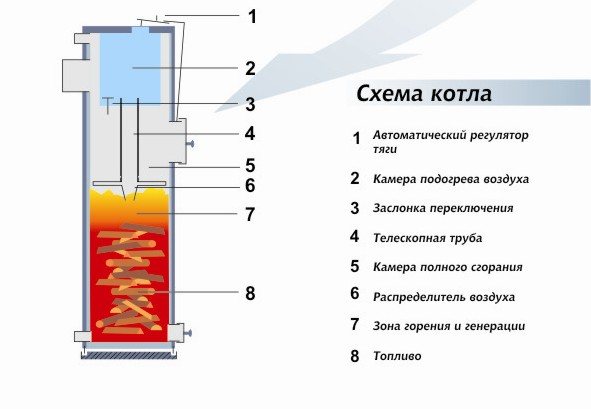

Diagram of an upper combustion boiler.
All solid fuel heating devices are available floor-standing.
Liquid fuel
Among them, one can single out universal boilers that, after changing the burner, are able to switch to cylinder or main gas. More convenient, however, is a scheme with several separate furnaces for different types of fuel.
Electrical
The most common, cheap and popular are heating elements, in which several tubular heating elements transfer heat to the water in the heat exchanger tank.
However, alternative schemes cannot be ignored.
- The electrode boiler provides heating of the water due to the current flowing directly through it. Devices of this type are compact and absolutely safe: in case of water leakage, heating stops not due to automation, but due to the principle of operation of the device. The disadvantages of the scheme are strict requirements for the composition of water and gradual dissolution of the electrodes.
- An induction boiler is, simply put, a dielectric pipe with a coil wound around it. A ferromagnetic rod is placed inside the pipe.Induction currents quickly heat it up and the coolant flowing through the pipe; at the same time, there is no boiler wear during operation.


An induction boiler can also be extremely compact.
Heating boilers for all occasions. Replaceable burners and three types of fuel
It was already mentioned above about the advantages of replaceable burners, they provide the consumer with independence in the choice of fuel. The most in demand are inexpensive solid fuel boilers with gas burners of domestic production: Don (KONORD plant), Ochag (GAZSTROY), Yaik (Novosergievsky mechanical plant). The cast iron solid fuel boiler KChM-5 (Kirovsky plant) is very popular in the central region. A three-section model with a power of 21 kW costs 27,000 rubles, a gas burner worth 3,000 rubles is used with it.
Boilers designed for three types of fuel (solid, gas and diesel), produced by foreign companies SNARREE, DAKON, VIADRUS, DEMIR DOKUM, ROCA, JAMA. Record holders among combined boilers have a built-in heating element and are also capable of operating on electricity. Such boiler models are manufactured at STS and JAMA factories. For example, for a STS 2200 Trio with a capacity of 45 kW, all types of fuel are suitable (price - 240,000 rubles).
Service of heating boilers
The warmth in the house is one of the most important components of a comfortable stay, but no heating system is guaranteed against failure. The cause of a breakdown can be both a manufacturing defect in the equipment and improper installation, as well as natural wear and tear of various components. Of course, aging of parts cannot be completely avoided, but proper maintenance can significantly slow this process down.
The costs of preventive maintenance will be significantly - ten times - lower than the possible costs of repairing equipment, in most cases requiring complete dismantling and removal of the faulty boiler to a service center.
What is serviceable?
Obviously, distribution manifolds, pipelines and heating radiators do not provide any special measures to keep them in working order. A visual inspection of the accessible sections of the system for the detection of corrosion and leaks, as a rule, is carried out without the involvement of specialists, or even not at all. Circulation pumps, thermostats, valves and gate valves must also be replaced only upon failure: this procedure can be quite time consuming and expensive, since the coolant will have to be drained from the corresponding circuit or even from the entire heating network.
By the way, many boiler manufacturers strictly limit or even prohibit the use of special antifreeze, disclaiming all warranty obligations in case of violation of this condition. The most convenient and reliable coolant is ordinary water with special additives, chemically purified and deaerated.
Thus, the boiler itself needs periodic inspection and maintenance, regardless of the type of fuel used, as well as the fuel supply line and chimney. Particular attention is paid to checking and adjusting the operating parameters of boiler equipment, control and safety automation, cleaning of burner elements.
Practice shows that serious breakdowns in boilers do not occur so often that the record time of arrival of specialists is of great importance when drawing up a service contract.
Who is the best to entrust the boiler repair and maintenance work?
There are a number of organizations that service boiler equipment: as a rule, any seller of such equipment will be happy to give the buyer detailed information on this matter. As in any industry, large firms with branches in various areas of the suburbs and smaller companies without a developed network of service centers are represented here.Some are trying to interest customers with affordable prices, others - with a wide range of works, sometimes not too necessary for the consumer, while others declare a large number of mobile teams and the shortest time for the arrival of specialists to quickly eliminate the breakdown.
Without trying to single out any of the listed advantages as the only one important when choosing a service organization, let's say that here you need to look for a middle ground. Very low prices look suspicious: the market for such services is saturated enough for someone to offer real dumping prices. A mobile team consisting of one certified specialist and a bunch of random people who can only work with a wrench can do more harm than help. Most likely, there is no point in overpaying for a set of additional services: the list of necessary measures is contained in the documentation with which boiler manufacturers supply their products. The importance of performing work not included in this list is often far-fetched.
In addition, the myriad of repair teams ready to arrive on call within almost a couple of minutes are also not a reason to overpay.Even in a severe frost, if there is good thermal insulation in the house, complete cooling takes place in 3-5 days, besides the tenants can use local heaters - for example, electric or infrared. So, if the organization guarantees the arrival of repairmen within 24 hours (in most cases, this is the period indicated) - this is quite enough.
As for the documentary confirmation of the right to carry out both installation and commissioning works, as well as measures for servicing boilers, this type of activity is currently not subject to licensing. However, a prerequisite is the presence in the company's staff of employees trained to work with gas equipment (with the issuance of an appropriate certificate) and admitted to work on electrical equipment with a voltage of up to 1000 V (3rd and higher electrical safety group). Passing certification for the maintenance of specific brands of boilers is advisory and may not be documented in any way. At the same time, a large number of all kinds of diplomas and certificates on the walls in the office of the company does not in itself mean anything: they may not have anything to do with the employees of the field teams. But there is nothing wrong with that: the company in any case bears full responsibility for the actions of its personnel, and modern boiler equipment of various brands does not have significant design differences.
How much does the boiler maintenance cost?
As already mentioned, the cost of boiler maintenance may vary slightly depending on the specific service organization, as well as on the list of work performed. Below is an approximate range of prices for this type of service: approximately this amount will have to be parted when concluding a contract for a period of one year. The final price will be determined by the type of boiler, the complexity of the work at the facility and its remoteness from the office of the company or its branch. The list of activities has been compiled in accordance with the requirements and recommendations of most equipment manufacturers, without additional services, the need for which may be controversial.
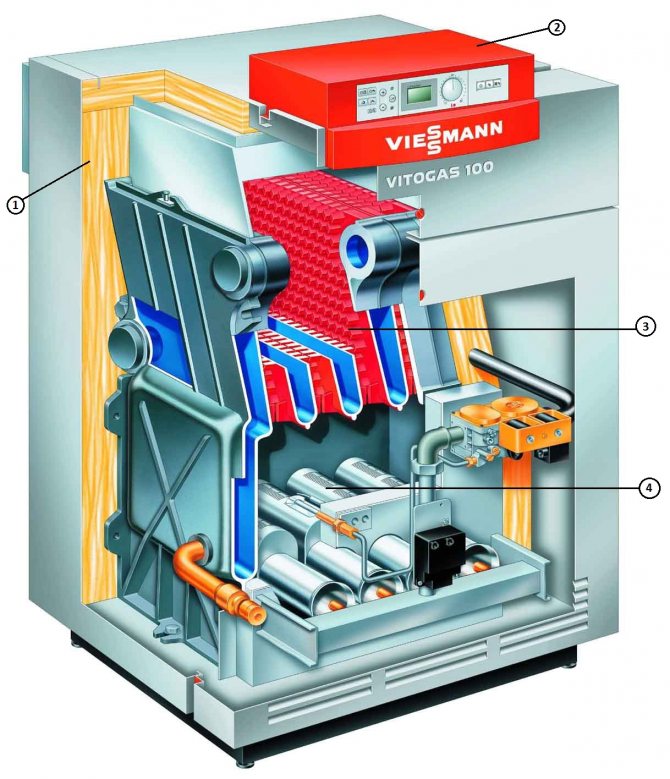

The construction of a floor-standing gas boiler using the example of Viessmann Vitogas 100-F. 1 - highly efficient thermal insulation, 2 - heat exchange surfaces made of special gray cast iron, 3 - stainless steel rod burner with partial premixing, 4 - digital boiler controller
So, concluding a contract for boiler maintenance twice a year (a requirement for a number of diesel models) will cost the customer 12,000 - 22,000 rubles: this cost includes an unlimited number of visits by repair teams to eliminate breakdowns.A similar agreement providing for a one-time performance of service work (sufficient for units of any type of low and medium capacity) is estimated somewhat cheaper: from 6,000 to 18,000 rubles. If the customer is confident in the reliability of the equipment used, then he can save a little more and pay from 4,000 to 10,000 rubles: this amount includes only boiler maintenance, and all team visits for troubleshooting are paid separately, and their cost depends on the specific breakdown.
The measures for preventive maintenance of the heating system (boiler) include:
- external inspection of the burner and boiler, diagnostics;
cleaning and maintenance of burners:
- cleaning the fire tube;
- cleaning the retaining washer;
- cleaning the arson electrodes;
- replacement of the nozzle;
- fan cleaning;
- flushing or replacing the fuel pump filter;
- flushing the photo sensor;
- cleaning the retaining washer;
- air sensor purging;
- dismantling and subsequent installation of the gas section;
- cleaning the boiler gas ducts to the smoke channel (subject to access to it and the possibility of dismantling);
- control of electrical parameters;
- burner and boiler adjustment;
- control of the composition of waste gases;
- boiler check;
- checking mixers;
safety automation check:
- checking the gas equipment of the boiler;
- external inspection of the gas pipeline;
- check for tightness of flange, threaded connections and welded joints on the gas pipeline;
- checking the actuation of the shut-off valve.
These articles may also be of interest to you:
- Replacing the siphon and sink drain
- Installation and repair of electric water heaters
- Removing clogging with a plunger with a pump
- The original design of a small kitchen
What else to read?
Tags: gas burners, gas condensing boilers, gas boiler, gas generating boilers, euro wood, pressurized boilers, wall-mounted gas boilers, heating boiler, heating, pellet boilers, pellets, pyrolysis boilers, home heating system, electric heating boilers, electrode boilers, electric boilers
Boiler selection tips
Before choosing a heating boiler, you should analyze all possible options and take into account the main criteria, whether it is a solid fuel boiler or electric, gas or combined.
- Attention should be paid to the volume of the room and the features of the thermal insulation of the external walls. Of great importance is the cooling rate of the room, how long it keeps warm.
- The boiler output must correspond to the parameters of the room. As a rule, the volume of the proposed premises is usually indicated on the product card.
- Depending on the design of the boiler, the heating can be partially or fully automated.
- If you are looking for a more convenient option for a solid fuel boiler, then pay attention to pellet boilers or long burning boilers.
